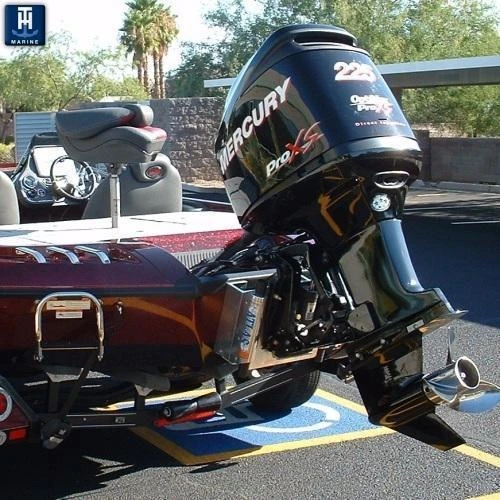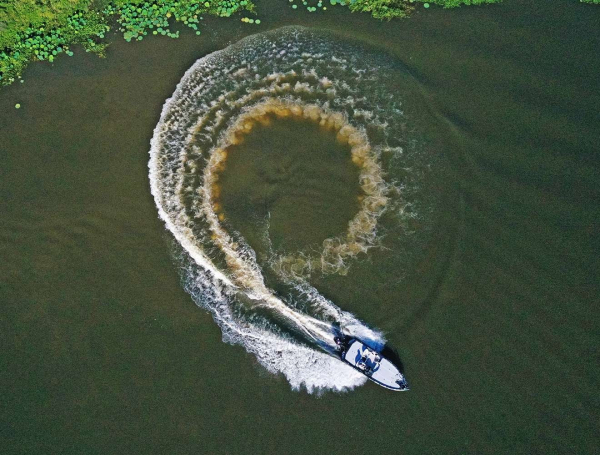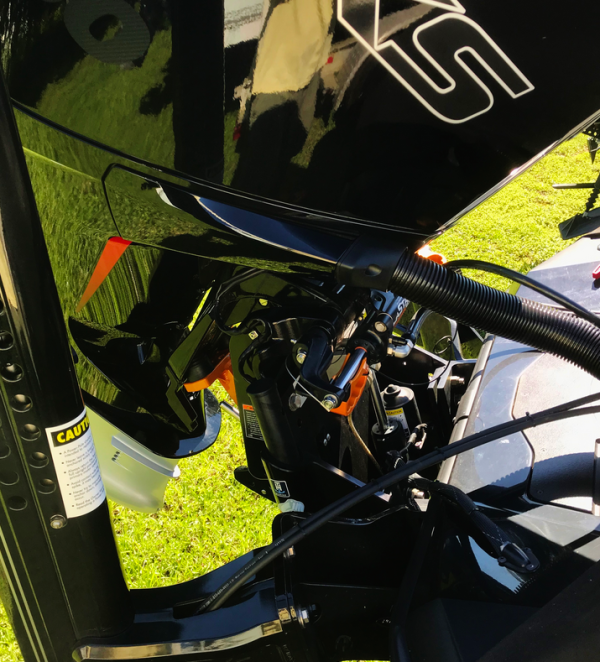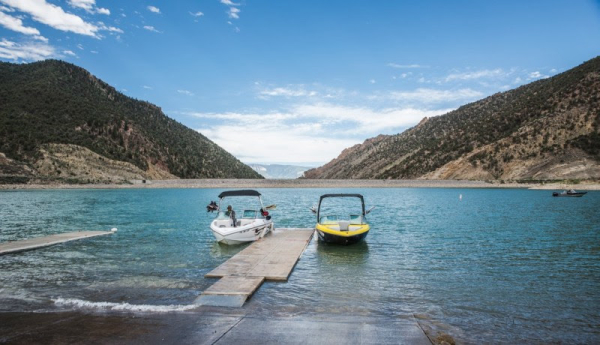Kayaks, ultralight tackle and panfish make a successful combinationBy Noel VickPhoto courtesy of Hobie
from The Fishing Wire
“Panfish” is perhaps the biggest catchall category in fishing. Essentially, if it’s round and measures somewhere between the size of an adult hand and the fateful frying pan, it’s a panfish. We’re talking about the zillion species of sunfish, a couple styles of crappies, as well as – in the opinion of many including myself – white bass.
Drumroll please… And now you’re being urged to pursue the commonest freshwater fish in North America with the uncommonest of approaches: pedal kayak trolling. Take a breath and a moment to get over the weirdness. It’s an extraordinarily effective technique.For this discourse, it’s best talking lure selection first, as it’ll dovetail into techniques. My panfish trolling portfolio consists of two primary categories: hardbaits and spinners.
Hardbait Pedal Trolling
Not too many years ago, the marketplace was inundated with downsized bodybaits, including lipped crankbaits, jerkbaits and lipless rattle baits. Manufacturers miniaturized existing models and developed entirely new micro hardbaits. I’ve trolled and tested them all from my Hobie Mirage Pro Angler 14.
Panfish of all stripes – especially larger specimens – either make a living off bait and fish fry or will opportunistically eat forage with fins and tails. Hardbaits also ferret-out the most aggressive fish and can be trolled faster than spinners, letting you cover more water in less time. Hardbaits are unquestionably the best search tool.
Trolling by pedal kayak simply means casting the bait back, letting out additional line – minimum of 100 feet – and you’re fishing. Whatever species you pursue, the odds of success are improved by getting the lure as far away from the boat as possible, especially in depths of 10-feet and less where fish more easily scatter. Experience has proven, however, that the darker the water the closer you can run baits.
As with other forms of pedal trolling, longer rods are recommended. Think about the common practice of spider-rigging for crappies; it’s about spreading the field of coverage. In a kayak, where legal, two long rods can be easily managed.
The best all-around panfish trolling rods hail from St. Croix’s Panfish Spinning Series. The blanks are constructed of a dynamic blend of SCVI and SCII graphite providing responsive touch, balance and finesse. I employ either the 8-foot (PFS80LMF2) or 9-foot (PFS90LMF2), light, moderate-fast, 2-piece models. They curve concentrically on the move, and natively sweep-set upon strike. For added machismo with larger baits, or bigger-billed ones with greater resistance, I carry the 7-foot, light, extra-fast-action model (PF70LXF).
Rods are paired with 2500 size spinning reels. Smaller 1000 and 2000 sized reels don’t take up line nearly as fast. And personally, I like the feel of a larger reel. And when you opt to stop and cast, they yield greater distance. Daiwa’s affordable Regal LT is a solid and widely available choice.
Like all my pedal kayak pursuits, braid is the word. Braid has better sensitivity and buffers the softness of long panfish rods with stoutness to produce ideal, hands-free hooksets. Braid also lets the rod communicate to me that lures are running true. Consider either 6- or 8-pound test of Daiwa’s super narrow diameter J-Braid x8.
Leaders are mandatory, too, long ones (24-inch minimum), which combat panfish species’ exceptional vision. Fluorocarbon makes are best. I tie in sections of Daiwa’s J-Fluoro in 4- or 6-pound test, finishing with a tiny snap for speedy lure changes.
LIVETARGET’s 2 ¾-inch Rainbow Smelt Jerkbait does it all, never discriminating against species, including bass. Although designed to replicate a rainbow smelt, fish in waters dominated by shad and other shiner species don’t seem to care. I theorize that the Rainbow Smelt Jerkbait’s precision anatomy, pure trolling path, and seductive action make it universally effective.Rapala has a major stake in the panfish market, too, and their baits are always onboard.
Fish fawn over the petite, 2 ½-inch Rapala Husky Jerk, a downsized rendition of the popular, slow-sinking series. To that, Rapala also tenders the Ultra Light series, catering specifically to panfish anglers. The 1 ½-inch Ultra Light Crank is not only cute as hell, but has the surprising capacity to run deep on the troll, nearing the 10-foot mark.
Daiwa also comes to the plate with a couple diminutive heavy hitters. The 2-inch Dr. Minnow Jerkbait turns fish heads. And when you’re in the midst of larger, meat-eaters, consider Daiwa’s 3.75-inch TD Minnow.
Color selection is an exercise in experimentation. For the most part, I stick to natural, baitfish tones – the silvers, whites and blues – but often opt for more color in stained water. And for whatever reason, panfish respond exceptionally well to greens, especially ones with lighter bellies.
Spinner Pedal Trolling
Let’s first clarify, I’m talking about hairpin spinners, not inline spinners. Years of pedal trolling have proven that bags are basically doubled with hairpins. I believe it’s the flash combined with a juicy, baitfish profiled target – the jig and soft plastic.DIY is the only way to go with hairpin spinners. Certainly, there are hordes of pre-rigged variations available, but none matching my surefire assortment. To this, entirely, my hairpins are founded on Betts Spinners. The series affords Colorado blade sizes 0, 1, and 3, the heartier 3-size providing the best loft, especially with smaller jigs. Both silver and gold options are available, too. I employ silver in most scenarios, but swap to gold in dark water.Z-Man Slim SwimZ and Finesse ShroomZ jighead with hairpin spinner.
Next in line is the actual jig. Betts offers several workable styles, too, but I prefer a couple others. Z-Man’s capsule-headed Finesse ShroomZ are the defacto heads for Ned Rigs, and I find them equally amazing with hairpin spinners. Featherweight sizes of 1/15- and 1/10-ounce are the magic bullets. Keep a pool of red, black, green and white heads onboard to color match bodies.Northland Tackle’s RZ Jig is another winner, and easily found above the Mason Dixon Line.For my druthers, there are three failsafe brands of bodies: Z-Man, Bobby Garland and Bass Assassin. The throbbing paddletail of Z-Man’s 2.5-inch Slim SwimZ is a crappie menace. Its narrow girth prompts the hairpin to run single-file. And, constructed of ElaZtech, a single Slim SwimZ can easily burn through a limit of crappies.
Nationwide, Bobby Garland Crappie Baits own the most shelf space. This is warranted. The popular bodies – specifically the Original 2” Baby Shad – are to panfish what peanuts are to elephants. Ideally shaped like fish fry, they are squishy in the fingers, causing fish to hang on, and come in a staggering 75 colors. The flamboyant Cajun Cricket is a sunfish favorite. Baitfish-toned Blueback Shad Diamond Mist tempt everything in clear to lightly stained water. Glacier Blue, a white body peppered with blue, is a frequent flyer as well.Grab a few packs of Bass Assassin’s 3-inch Baby Shad to mix things up. They, too, come in a wide pallet of colors.
Northland Tackle’s legendary Rigged Mimic Minnow Shad come pre-rigged with physically accurate bodies and fish-fry-shaped heads. The color matching is already done. 1/32- and 1/16-ouncers are the chosen ones. Pedal trolling hairpin spinners is elementary. Locomoting slower than you would with hardbaits, even as slow as 1 MPH, is enough to keep the blades turning while riding high in the water column. Hairpins are at their best lazily humping along above targeted fish. In 10-feet of water, I want the hairpin mobilized 3 or 4 feet down, and no deeper than 5. Sometimes, I’ll run a hairpin rig in both rod holders, crack a cold one and light a cigar, and make sequentially spaced passes over suspect water.
Even though many missions are in less than 10-feet of water, my eyes are glued to the electronics, a 9-inch Raymarine Axiom. Even in shallow water you can mark fish. But more importantly, the Raymarine reveals weeds and other fish holding elements, not to mention signaling depth breaks. And if you find panfish pasted to the bottom, it’s time to hit the brakes and go to a vertical presentation; just the jig and plastic or a weensy jigging spoon. The Raymarine will reveal these tiny baits beneath the kayak in real time. Turn on the A-scope feature and experience the same, live drama you enjoy when fishing vertically through the ice.
Assuming you’re the results-oriented type of angler who has gotten over the stigma of trolling in general (you likely wouldn’t have read this far if you weren’t), expand the technique into your panfishing – preferably by pedal-driven kayak – and see what happens. A cooler of crappies and sunfish does not lie. |

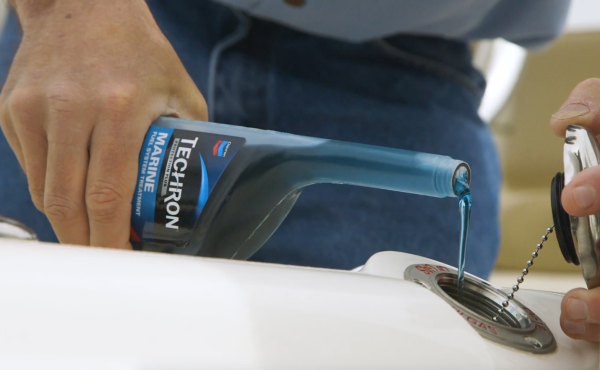
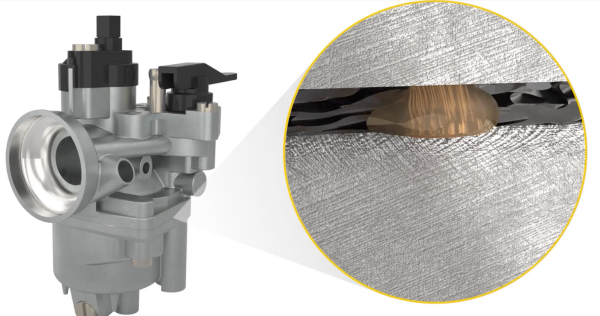 Stabilize A Full Tank
Stabilize A Full Tank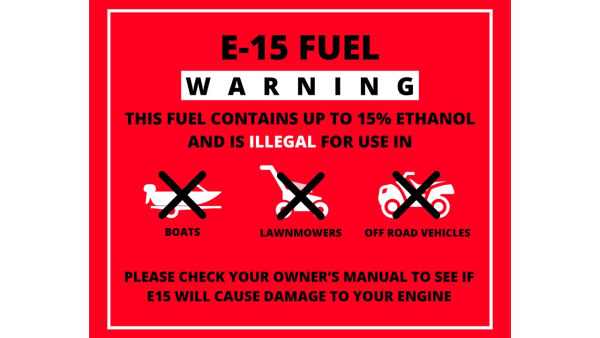 The results of a new national poll initiated by a group of organizations representing manufacturers, retailers, and consumers of non-road engine equipment and products reveals the vast majority of consumers find current E15 labeling at gas pumps to be ineffective in communicating the dangers of this type of fuel for usage in small engines like those in boats, off road vehicles, motorcycles, and lawn mowers.
The results of a new national poll initiated by a group of organizations representing manufacturers, retailers, and consumers of non-road engine equipment and products reveals the vast majority of consumers find current E15 labeling at gas pumps to be ineffective in communicating the dangers of this type of fuel for usage in small engines like those in boats, off road vehicles, motorcycles, and lawn mowers.